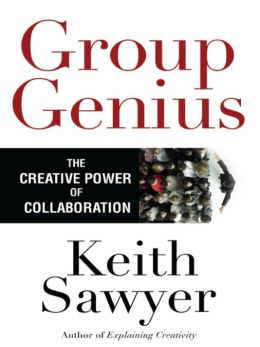 I’ve heard a lot of crazy things about the creative process. It seems everyone has their own take on it. I’ve heard writers tell me: they can only write in Starbucks; they can only write in complete silence; they can only write when they are stoned; they can only write alone; and they can only write in collaboration with others. In short, it always seemed to me that trying to define the creative process was like trying to catch lightning in a bottle.Well, it seems that someone has caught lightning in a bottle.One of my favorite authors, psychologist Keith Sawyer, has made a career out of studying the creative process. In his book “GROUP GENIUS,” Sawyer interviewed and observed a huge number of creative people in diverse fields and activities. Drawing both on his direct observations and the work of other psychologists Sawyer has set down a definition of the five stages of the creative process.“1. Preparation. This involves a period of working hard, studying the problem, and talking to everyone else working on it.2. Time Off. The team member changes context and engages in other activities – often in conversation with others.3. The Spark. During the time off, a solution appears; but that solution is deeply embedded in the knowledge and social interactions of the preparation and time-off phases, and it builds on sparks that others have had.4. Selection. An “Aha!” feeling doesn’t always mean the idea is good. Creative people are very good at selecting the best ideas for follow-up, or they collaborate with others in selecting them.5. Elaboration. Working out the idea typically requires a lot of additional ideas. Bringing them all together always requires social interaction and collaboration.”What always strikes me about these stages are the extent to which they specifically require creative people to talk to others, interact with others and rely on the work of others.I frequently fall back on the definition of these stages when talking to people about their creative processes. When I hear “I’m stuck,” I know that means that either there is more preparation to be done or more time off to be taken. When I hear ‘I just can’t get the picture in my head down on the page,” I know that it’s time for the creator to be collaborating and interacting with other artists.Sometimes that’s all people need to get back on the creative beam – a sense of where they are in the process and where they are going.
I’ve heard a lot of crazy things about the creative process. It seems everyone has their own take on it. I’ve heard writers tell me: they can only write in Starbucks; they can only write in complete silence; they can only write when they are stoned; they can only write alone; and they can only write in collaboration with others. In short, it always seemed to me that trying to define the creative process was like trying to catch lightning in a bottle.Well, it seems that someone has caught lightning in a bottle.One of my favorite authors, psychologist Keith Sawyer, has made a career out of studying the creative process. In his book “GROUP GENIUS,” Sawyer interviewed and observed a huge number of creative people in diverse fields and activities. Drawing both on his direct observations and the work of other psychologists Sawyer has set down a definition of the five stages of the creative process.“1. Preparation. This involves a period of working hard, studying the problem, and talking to everyone else working on it.2. Time Off. The team member changes context and engages in other activities – often in conversation with others.3. The Spark. During the time off, a solution appears; but that solution is deeply embedded in the knowledge and social interactions of the preparation and time-off phases, and it builds on sparks that others have had.4. Selection. An “Aha!” feeling doesn’t always mean the idea is good. Creative people are very good at selecting the best ideas for follow-up, or they collaborate with others in selecting them.5. Elaboration. Working out the idea typically requires a lot of additional ideas. Bringing them all together always requires social interaction and collaboration.”What always strikes me about these stages are the extent to which they specifically require creative people to talk to others, interact with others and rely on the work of others.I frequently fall back on the definition of these stages when talking to people about their creative processes. When I hear “I’m stuck,” I know that means that either there is more preparation to be done or more time off to be taken. When I hear ‘I just can’t get the picture in my head down on the page,” I know that it’s time for the creator to be collaborating and interacting with other artists.Sometimes that’s all people need to get back on the creative beam – a sense of where they are in the process and where they are going.

